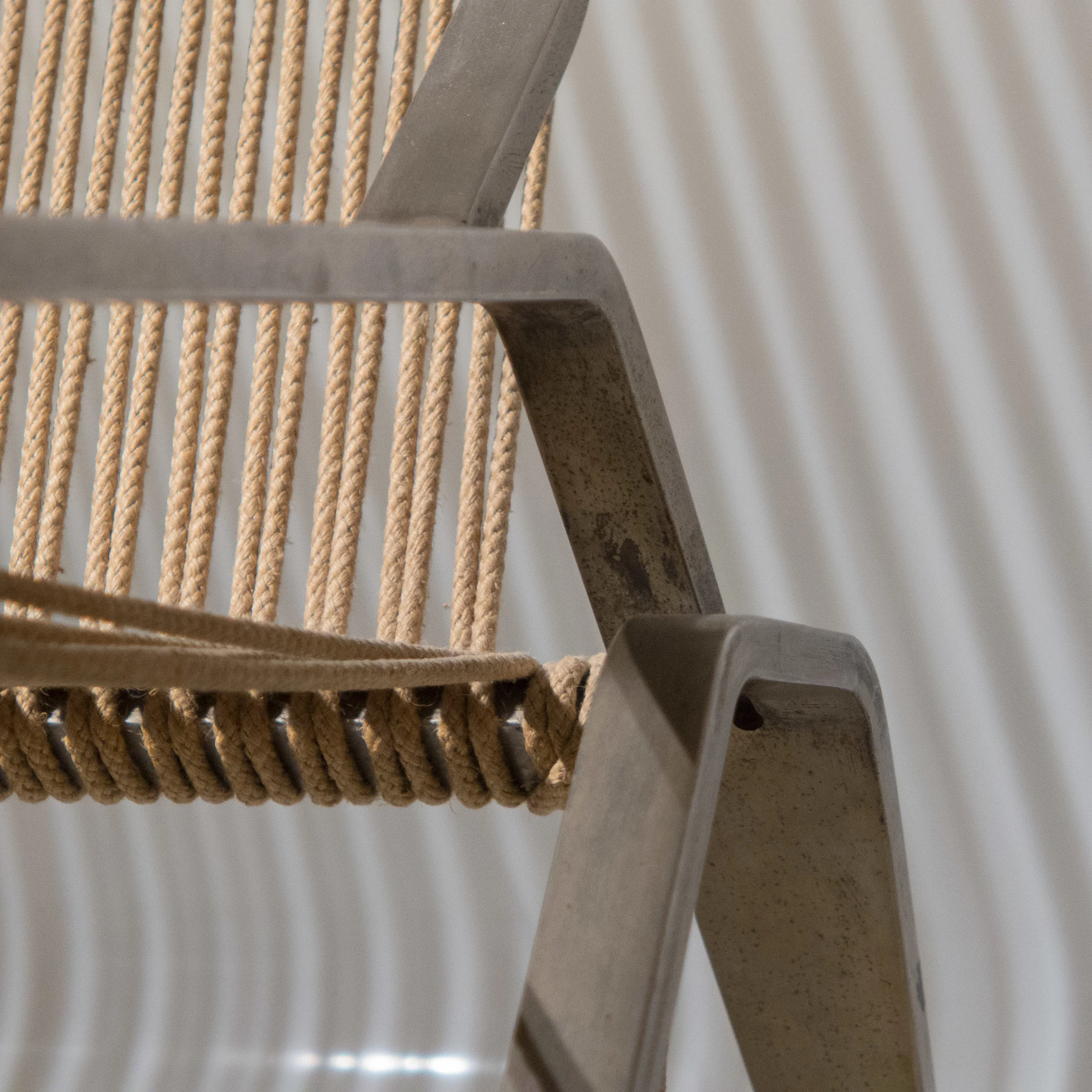Halyard
/PK25 by Poul Kjærholm 1951
detail of Flag Halyrad Chair by Hans Wegner 1950
Halyard or rope was used in a number of chairs in the 1950s and 1960s, and not just for garden or terrace furniture.
It was most-often used in its natural colour so a grey/brown or buff of the jute used to make the rope although some designs were and are offered with the rope dyed black.
Modern versions of these chairs use halyard with the jute wrapped around a nylon core for a stronger rope and to minimise stretching.
The way the rope is strung across a seat or seat and back varies so either threaded through holes - as on the Deck Chair or recliner by Hans Wegner from 1958 - or, more often, tightly spaced and wrapped over the frame - as with paper cord - or the rope can be knotted at intervals along the frame and formed into a net rather like a hammock with the ropes interwoven in a diamond pattern and possibly with cleats or metal loops that act as spacers.
Through his career Hans Wegner used rope or halyard on some of his largest and most dramatic chairs including the Flag Halyard Chair in 1950, the Hammock Chair pp135 from 1967, Rocking Chair pp124 from 1984 and Circle Chair from 1986.
Poul Kjærholm used halyard for the seat and back of Chair PK25 designed in 1951; for the wooden chair made by Thorvald Madsens Snedkerier that was designed in 1952 and for the small and light dining chair PK3 that Kjærholm designed in 1956.


